Two New Ions: ASUS AT3N7A-I and ASRock Ion 330
by Anand Lal Shimpi on August 28, 2009 12:00 AM EST- Posted in
- Motherboards
Determining the Speed of an Atom
In case you missed it, I’m providing some comparison numbers between the ASUS Ion and the systems I tested in the Zotac Ion review. This accomplishes two things: 1) it shows you that the ASUS Ion performs identically to the Zotac Ion, and 2) it puts the Atom 330’s performance in perspective compared to other non-Atom based platforms. If you want more detail on how the Atom 330 compares to an older platform like a Pentium 4, check out the Zotac review.
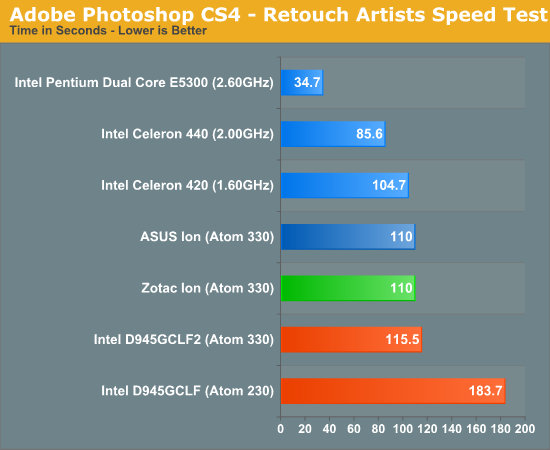
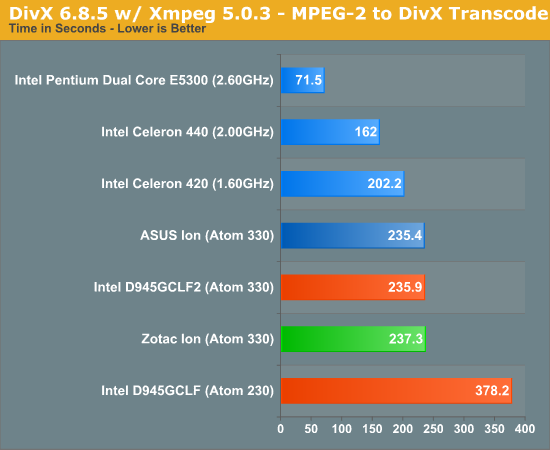
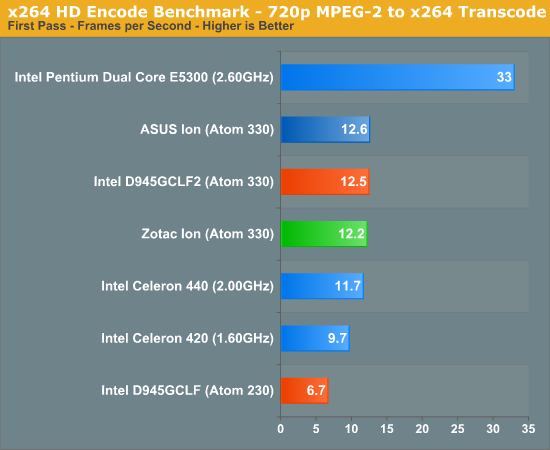
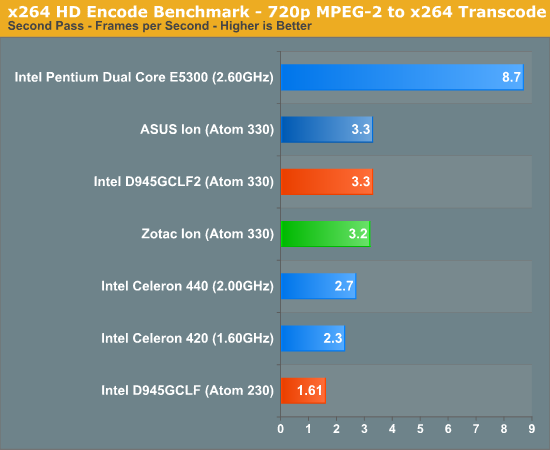
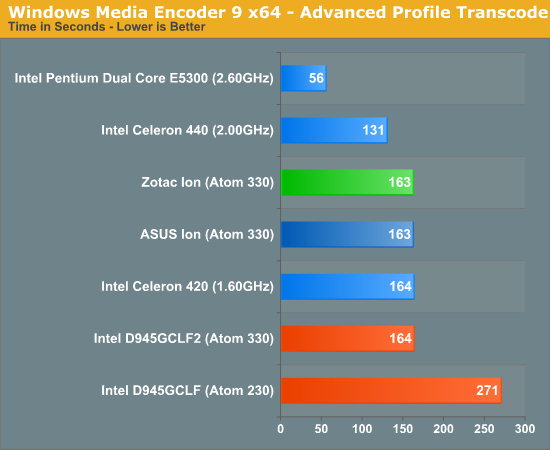
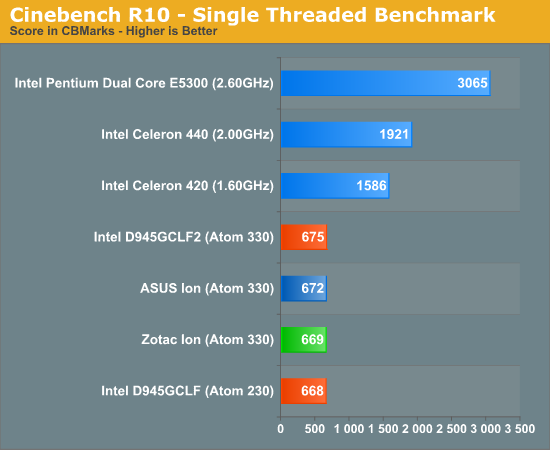
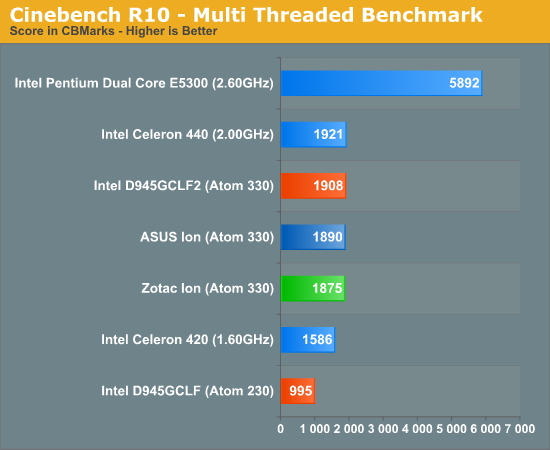
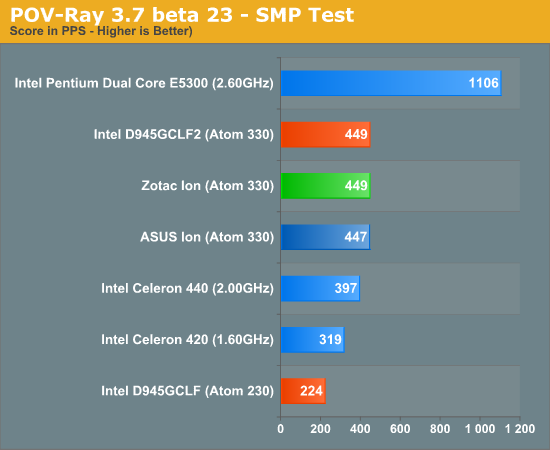

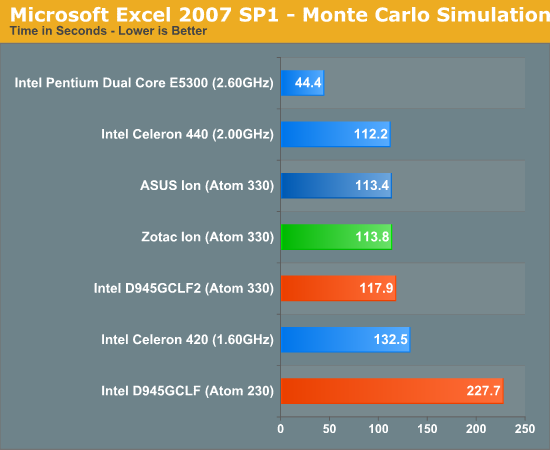

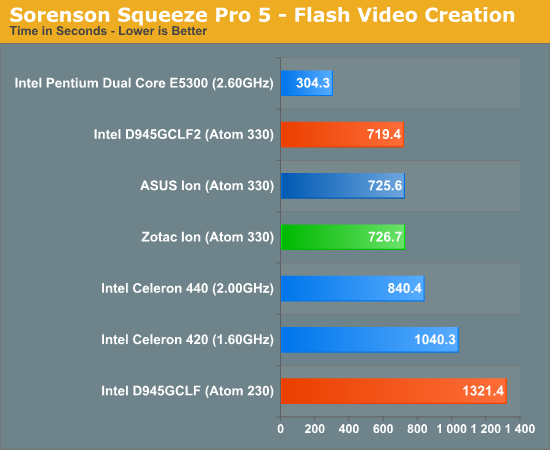
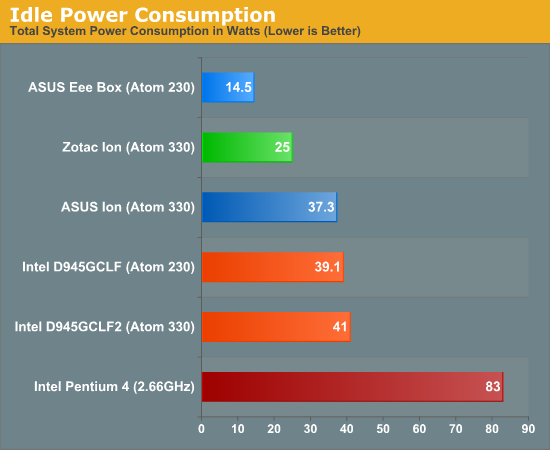
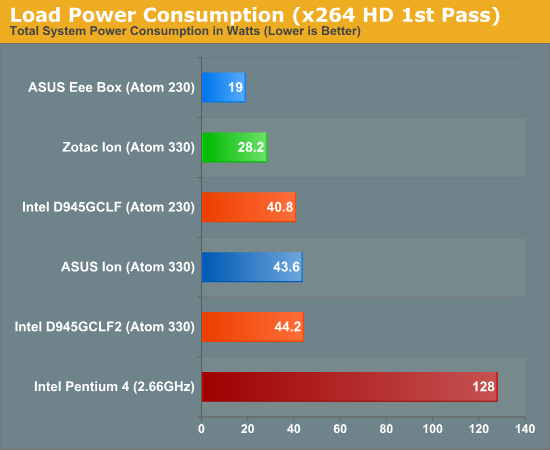
Gaming and CUDA Performance
I already went through this in the Zotac review, allow me to quote:
The gaming performance of Intel’s basic Atom platform is a joke. I’ll put aside debates of whether or not you would want to game on an Atom for a moment. World of Warcraft does a great job of straddling the line between casual and hardcore gaming and thus makes a good candidate for looking at gaming performance of Ion vs. Intel’s standard Atom platform.
I tested by running through a small outdoor section at 800 x 600 (24-bit color, no AA) using WoW’s built in “Good” visual quality settings. This is the same chart from the Pentium 4 section but I'm repeating it here so you have something to look at while we discuss the gaming potential of Ion:
The Ion platform managed just under 18 fps, which wasn’t incredibly smooth to play on but it was close. If I dropped the settings even lower I could easily get a smooth experience. The Intel D945GCLF2 managed a whopping 3 fps. I didn’t even bother benchmarking the single core version; I’m not that fond of single digits.
Most modern FPS games will show worse performance than what we just saw under WoW. Far Cry 2 and Crysis Warhead will give you under 7 fps for Zotac’s Ion platform, but other, more mainstream titles will perform similarly if not better.
I still maintain that the Atom CPU is not fast enough for a good gaming experience on far too many modern titles, but to NVIDIA’s credit, the Ion platform does make it fast enough in games that it otherwise wouldn’t be.
CUDA performance is a bit similar. The GPU can definitely help Atom in some situations if there's proper support, but don't expect to really ever make an Ion "fast" by today's standards. Gary had a particularly great experience with transcoding using Cyberlink's Media Espresso. Using one of our standard transcoding test files Gary made a high quality YouTube video with just the Atom 330 CPU in 405 seconds. Turning on GPU acceleration dropped the time to 261 seconds.
Overclocking the CPU to 2GHz brought the encode time down to 318 seconds; doing the same to the GPU (600MHz core, 1.4GHz shader clock) and turning on CUDA support brought the total time down to 203 seconds.


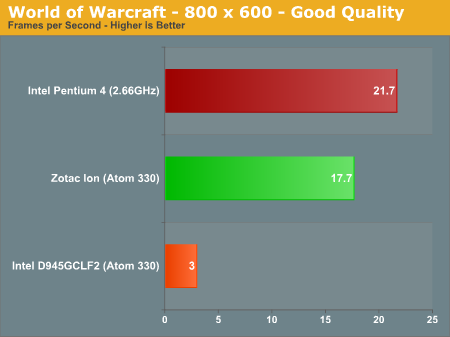








61 Comments
View All Comments
millerduck - Friday, August 28, 2009 - link
Thanks Anand. Looking forward to any news.MD